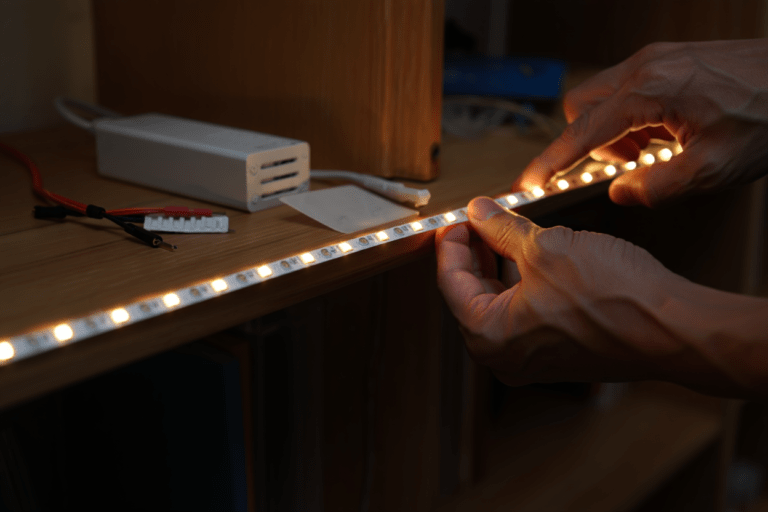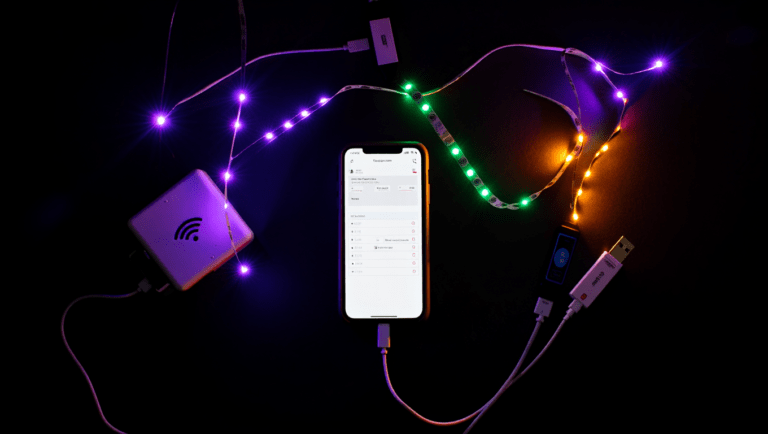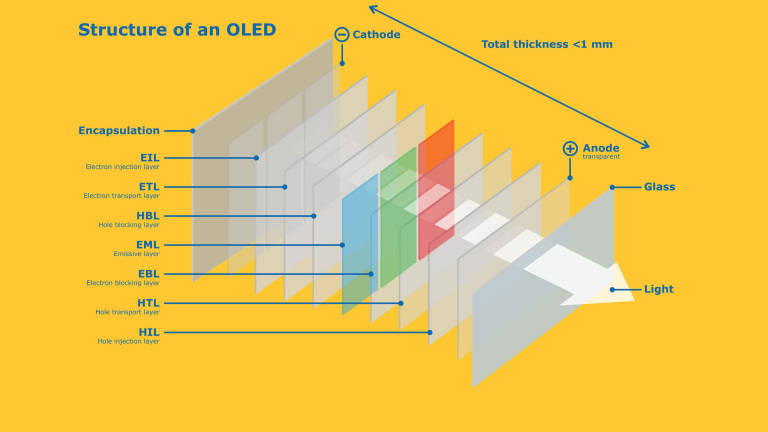The Ultimate Handbook for Office Lighting
Table of Contents
Investing substantially in office essentials like furniture, supplies, etc., aids in making your office a conducive workspace. Nevertheless, to further elevate Productivity, the office atmosphere demands continual improvements. Office lighting serves more than just illuminating specific areas; it influences the employees’ mood, a vital factor in boosting workplace efficiency. If employees persistently feel low, expecting improved performance is unrealistic.
This article will clarify doubts about the criticality of proper office lighting and how to optimize it.
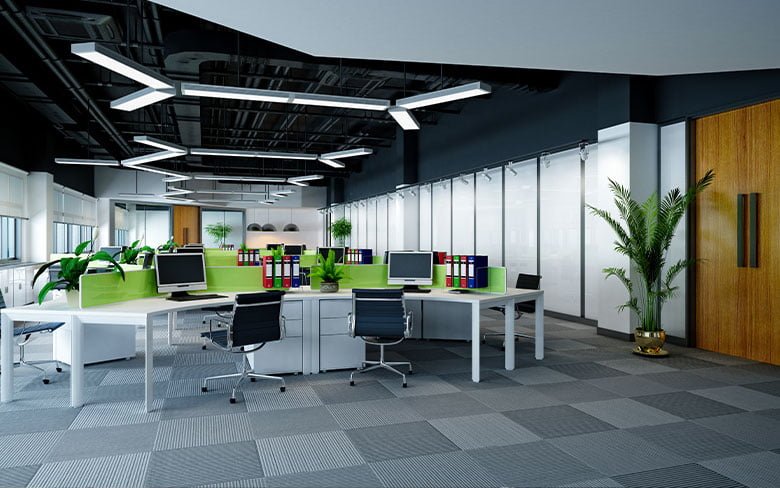
Significance of Office Lighting
Offices are meant to facilitate efficient work. Whether you’re self-employed or employ others, the office aims to create an encouraging work setting. Inadequate lighting will not only affect the space’s utility but can also induce lethargy. Light fixtures possess unique attributes dictating their usage. We’ll delve deeper into these features later, but it’s imperative to note that incorrect use of these attributes can negatively impact employee performance.
For instance, if the light’s color temperature is low, it may cause perpetual sleepiness among workers. Similarly, if the light’s intensity is too high, it can cause strain-induced fatigue. Thus, while planning an office layout, the importance of lighting is as high as other aspects like interiors and furniture.
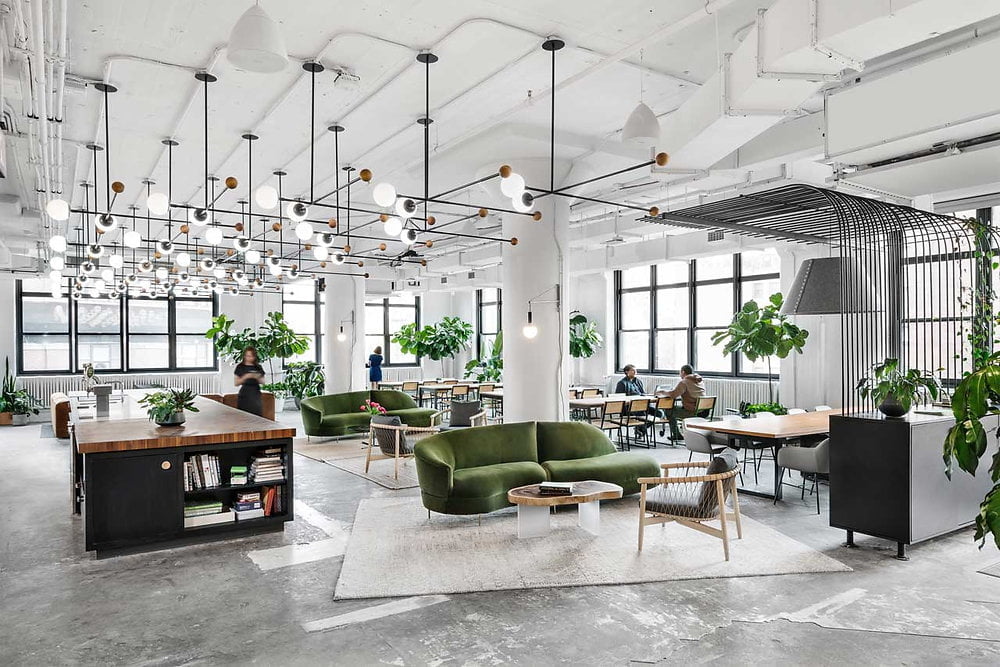
Categories of Office Lighting
There are four main categories of office lighting:
1. Ambient Lighting
This is the primary light source in any space. Large fixtures with suitable color, temperature, intensity, and CRI can create ambient light. The aim is to add functionality to a specific space. While creating ambient light in an office, ensuring it’s not harsh on the eyes is important.
2. Task Lighting
As the name implies, task lights are meant to provide appropriate illumination for specific tasks. For instance, if some office areas require paper-based reading and writing, task lights over those desks can enhance Productivity.
3. Accent Lighting
Accent lighting highlights a certain area or an object in the office. It can be used on notice boards to draw employees’ attention.
4. Decorative Lighting
Decorative lighting adds aesthetic value to a space. This type of lighting can help design a workplace that motivates employees to come in. It can also be used in cafeterias to create a distinct ambiance, ensuring employees don’t feel like they’re still working during breaks.
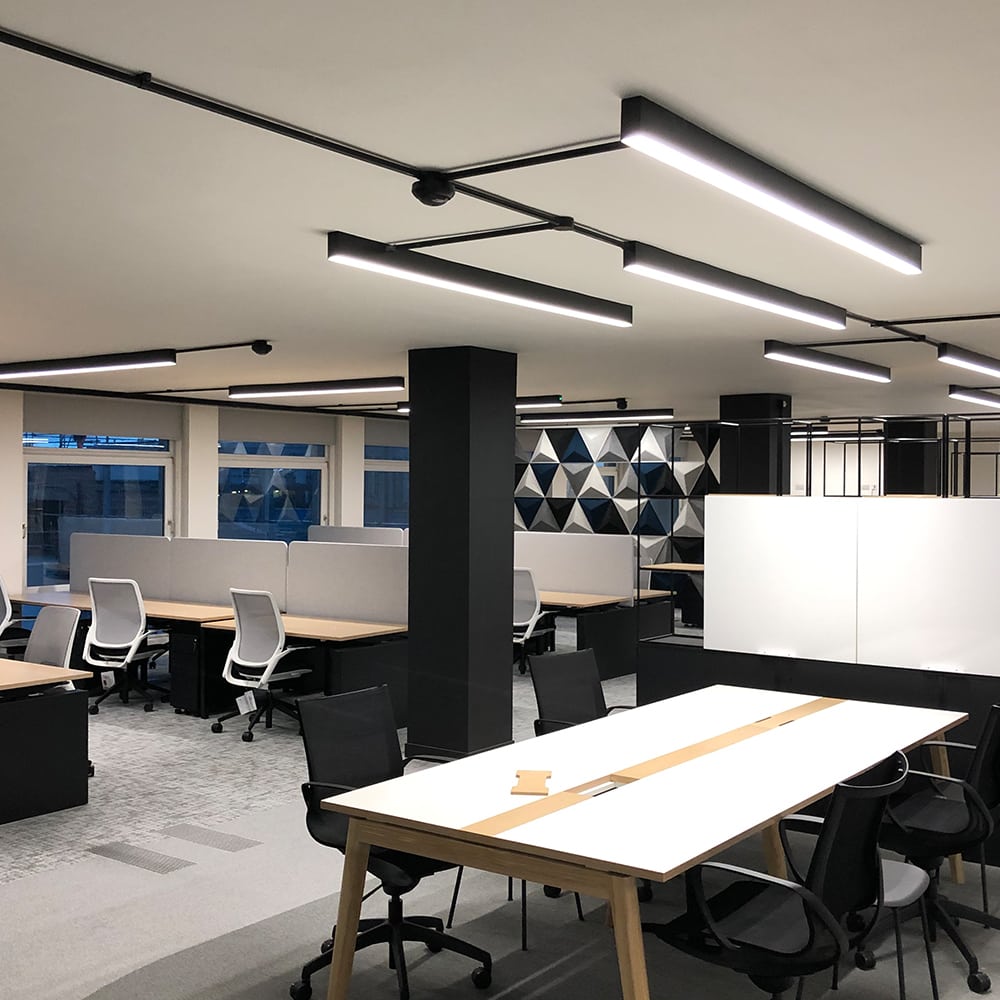
Key Factors For Choosing Office Lighting
Now that you understand the significance and types of lighting let’s examine some considerations for the process.
1. Types of Lights
Various lighting solutions are available for office spaces, including Halogen Bulbs, Incandescent Bulbs, and LEDs. LEDs are the recommended choice, not only for cost-effectiveness but also for their flexibility. LEDs are available in all forms and sizes, allowing you to recreate your desired design.
2. Light Intensity
The brightness or light intensity ensures a space’s utility. Neither excessively bright nor too dim is desirable. Measured in lumens, the intensity differs across spaces, but 40 lumens per square foot is generally suggested for most offices.
3. Color Temperature
‘The color temperature, measured on the Kelvin Scale (ranging from 1,000 to 10,000K), signifies the color a fixture emits on a spectrum. Lights below 4000K emit a warm, yellowish color and are considered warm lights’. On the other hand, those above 4000K emit a cool white light.
This is crucial as it influences employees’ moods. Lights below 4,000K stimulate melatonin production in humans, a hormone that induces sleep, causing workers to feel sleepy all the time. So, when designing office lights, aim for temperatures equal to or more than 4,000K.
4. Color Rendering Index (CRI)
CRI is an essential parameter indicating how accurately artificial lights represent object colors compared to natural light. It’s measured on a scale of 1 to 100; the closer to 100, the better the color rendition.
However, mimicking natural color is not always necessary; some interiors may look better with a lower CRI. This concept should be creatively applied when planning office lighting.
5. Glare Reduction
Glare can cause eye strain and potential long-term health issues, making its reduction in office spaces crucial. Chronic fatigue hinders employees’ ability to perform, especially when many work involves screens. Glare from screens can be minimized by optimizing the surrounding ambient light.
There are also several anti-glare solutions available in the market for light fixtures.
6. Energy Efficiency
Illuminating an office effectively requires multiple lights, which can consume considerable energy. To minimize overhead costs, energy-efficient LEDs should be used. Otherwise, higher energy bills alone will be challenging to manage.
Advantages of Quality Office Lighting
Proper office lighting will render numerous advantages, some of which include:
1. Boost Productivity
Appropriate illumination fosters a conducive work environment that encourages employees to put forth their best effort. This leads to a surge in Productivity, which ultimately increases total profits.
2. Mitigation of Eye Fatigue
Eye fatigue is a prevalent issue that workers face in their workplaces. Good light can help prevent chronic tiredness and enhance comfort for workers. As a result, it will elevate the Productivity and effectiveness of the staff.
3. Enhanced Mood and Wellness
As pointed out previously, light is instrumental in shaping the mood of individuals in any given setting. With sufficient light, there will be a noticeable enhancement in the mood of the employees, which fosters superior performance and Productivity.
4. Increased Safety and Security
Each workplace has its own hazards that can be mitigated through adequate lighting. Deploying task lights in areas vulnerable to accidents can help reduce their frequency.
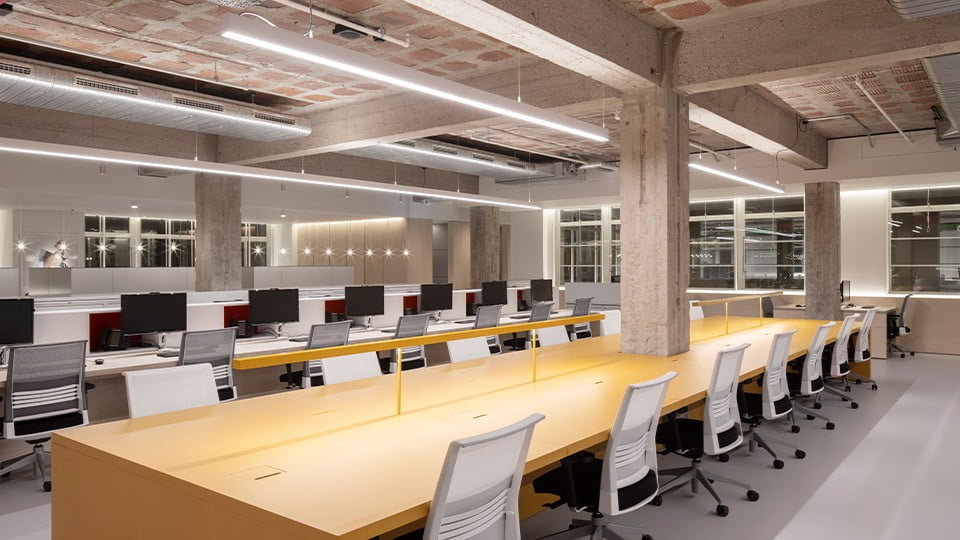
Guidelines for Planning Office Lighting
By now, you should grasp the fundamentals of office lighting. Although we advocate for the engagement of a professional to handle office lighting, this is sometimes not feasible. Thus, if you have resolved to handle the office lighting yourself, the following suggestions will be beneficial:
Assess Lighting Requirements
The initial step you need to undertake is to evaluate the amount of light each office area requires. You will find that different sections have distinct needs. For instance, zones, where most tasks involve using laptops or desktops, will necessitate higher brightness levels to counteract the glare from the screens. However, adjustments might be needed in areas where individuals must read and write on paper.
Devise a Lighting Plan
Upon identifying the lighting needs of various areas, you should formulate a plan to accommodate these needs. You should discern where to position ambient lights and which areas best accentuate with task and accent lights. In your plan, ensure that the beams from the fixtures do not overlap and that all areas are sufficiently lit.
Select Lighting Fixtures
The market offers a variety of fixture types suited for different purposes. You should select those that align with the layout you’ve planned. The location, ceiling height, and overall layout of the space should influence the choice of fixtures.
Integrate Various Types of Lighting
Relying solely on one type of lighting can render a space dull and uninteresting. You can infuse vitality into the space by incorporating different types of lights.
Maximize Natural Light
The optimization of natural light is a critical factor in office lighting. There’s no substitute for it, hence the importance of leveraging the full potential of natural light. Utilize natural light as ambient light wherever feasible and shape the rest of the layout around it. This will enhance the Productivity and overall wellness of the employees.
Conclusion
The significance of lighting in office design cannot be overstated; it demands consistent attention. It is crucial in boosting employee performance and creating a friendly workspace. Office lighting requires careful deliberation and planning. Selecting the right lighting system and light types is important, ensuring all zones are well-illuminated.
MyLikeLed is a reputable manufacturer of superior LED strips and LED neon flex. We conduct rigorous tests in our advanced labs to ensure the highest quality in all our products. Moreover, we provide tailored options for our LED strips and neon flex. Hence, for top-tier LED strips and LED neon flex, reach out to MyLikeLed at your earliest convenience.
FAQs
Office lighting affects employee productivity, focus, and well-being. Good lighting reduces eye strain and fatigue, creating a more comfortable and efficient workspace.
Natural light and cool white LED lighting are best. These types of light improve concentration and closely mimic daylight, which helps keep energy levels up.
Aim for 300 to 500 lux for general office work. This level is bright enough for reading and writing without causing glare or eye discomfort.
Cool lighting is better for work areas. It helps people stay alert and focused, while warm lighting is more suitable for break rooms or relaxation spaces.
Position lights to the side of screens and use diffusers or blinds. This minimizes reflections and prevents eye strain caused by direct light hitting screens.
Task lighting is focused light for specific activities like reading or typing. Yes, it’s useful if your workspace lacks enough direct light or you do detailed work.

Hi, I’m Xylia Xiong, a sales professional with 14 years of experience in the LED strip light industry. I specialize in providing tailored solutions, leveraging my expertise in LED products and the latest industry trends. Known for effective communication and problem-solving, I’m dedicated to helping lighting manufacturers, importers, and distributors achieve their goals.
Let’s work together to create customized solutions that exceed expectations.
Related Posts

- Call Us: +86-15920391130
- Email: info@mylikeled.com
- Office Address: No. 4 Keying road, Beitai road, Baiyun district, Guangzhou, China
- Factory: Building 12, Liandong U Valley, Guangqing Industrial Park, Shijiao Town, Qingcheng District, Qingyuan City, Guangdong, China
Copyright © 2025 – My Like Led All rights reserved.

